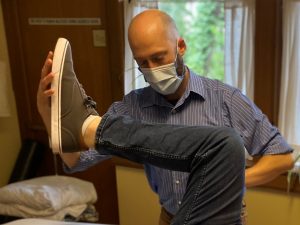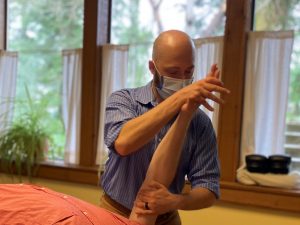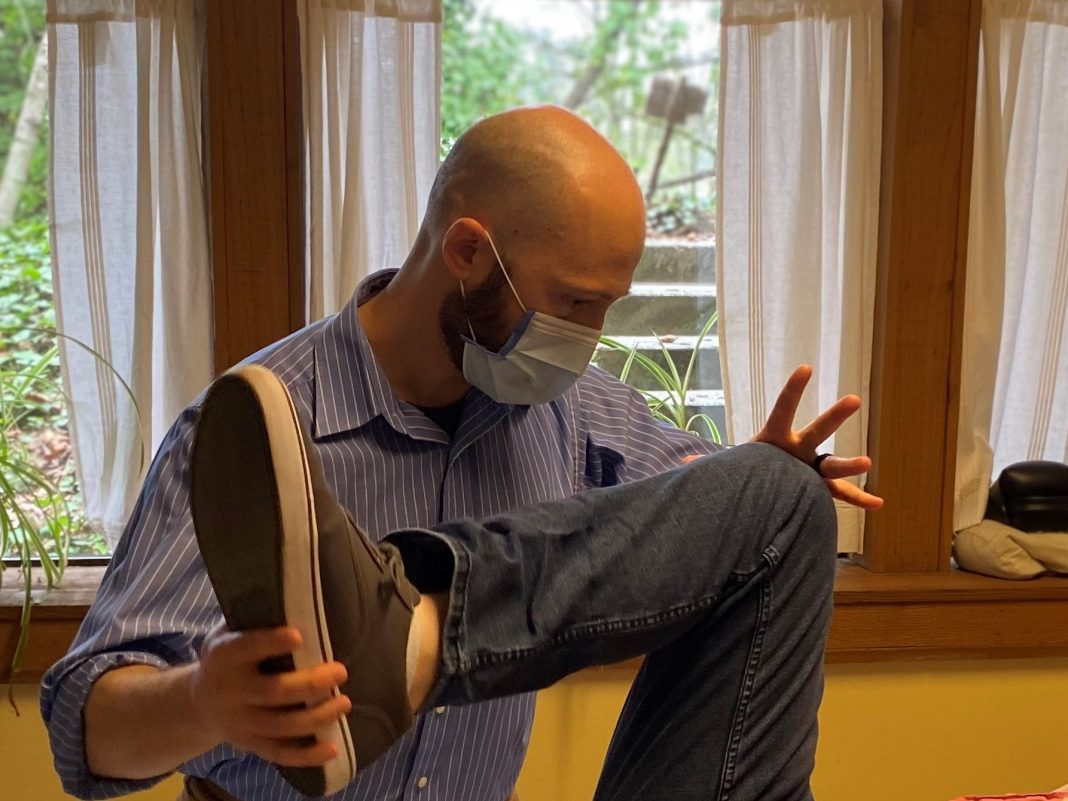Living with temporary pain is one thing. No matter how bad it gets, there is light at the end of the tunnel because we know it will end. Chronic pain is a different animal, however. It impacts not just our physical wellbeing, but our mental and emotional reserves, often leaving those who suffer from it drained and depressed. At Heart of Wellness, Physical Therapist Jeff Foucrier works with patients to address all aspects of living with chronic pain, including the most important one: feelings of hopelessness.

For most of the patients he sees, the root cause of chronic pain is trauma, whether through accident, surgery or disease. “Often the traumatic incidents aren’t just physical, they’re very mental,” Foucrier says. “When you have trauma without resolution, it can result in a cascade of compensatory changes in the body.”
Chronic pain changes how people interact with the world, according to Foucrier. “The first change is movement,” he explains. “The person becomes much more guarded and begins to avoid the things they love to do. As a result, they start seeing stresses in other aspects of their lives like their relationships and their jobs, because they no longer have the energy to concentrate and focus on the things they need to do.” One of the most consistent effects Foucrier sees is a feeling of hopelessness compounded by fatigue, mental drain and fogginess due to constantly battling pain.
For anyone coping with this issue, awareness is key, he contends. “You need to know what your body is doing to figure out where the baseline is to start. Then you can progressively change your lifestyle so you can have a healthy relationship with pain and movement.”
The concept of having a healthy relationship with pain may sound counterintuitive, but it’s an essential component of Foucrier’s approach with patients. “Pain is normal, and we should accept it as what it is,” he says. “Many people are told, ‘Don’t move because you will be in pain, and you shouldn’t be.’ That’s not true, because pain itself doesn’t necessarily mean anything traumatic is happening in the body. Movement has been found to help not only with the pain itself but also sometimes with the underlying mechanisms which cause the pain.”

When patients come to him, the first step is a detailed conversation about what kind of movement scares that person and how they feel their body is preventing them from doing things they would love to do. “There’s a huge disconnect between understanding when their pain happens with movement, and whether or not that movement actually causes their pain,” Foucrier notes. “Often, patients have a toxic relationship with movement, and they have no idea what they can do in or out of pain.”
The next step involves slowly adding progressive movements. For example, if a patient’s lower back pain is causing them to hunch over, they won’t want to move backward. However, that doesn’t prevent them from moving their arms and legs. “We normalize the idea of pain in an area that they feel safe with, then start doing strengthening and endurance routines for the arms and the legs,” Foucrier explains. “Slowly over subsequent weeks we’ll start moving them from a bent position to other positions to see how they respond. If they have pain, we back off a little bit and try some other exercises before coming back to it. They get to see that it’s safe to move, even with pain.”
Treatment can last anywhere from 6 to 12 weeks, depending on where the patient is starting from. Often, they begin to recover a sense of hope in that time, Foucrier notes. One patient, a 90-year-old woman, had been in pain for over a decade and had followed the advice she was given–to move as little as possible. “She would sit at home and not move at all,” he says. After several weeks of treatment, she began going on daily walks with her husband, something they hadn’t done in 15 years. She is also helping with the kitchen work.

“That’s something she’s been wanting to do,” Foucrier says. “She acknowledges that she might be in pain, but her attitude is, ‘I might as well do something I love while experiencing it.” Her relationship with pain has changed and if she continues with this plan, she’s going to see a steady decrease in pain over months and years. This is the long game.”
For anyone interested in learning more about how to manage and mitigate chronic pain, Foucrier and Heart of Wellness hosted a recent webinar on the topic. Access that webinar and all other Heart of Wellness webinars on the Heart of Wellness Webinar Page.
Learn more by visiting the Heart of Wellness website or calling 360.570.0401 to set up a free 15-minute discovery visit.
Sponsored



















































